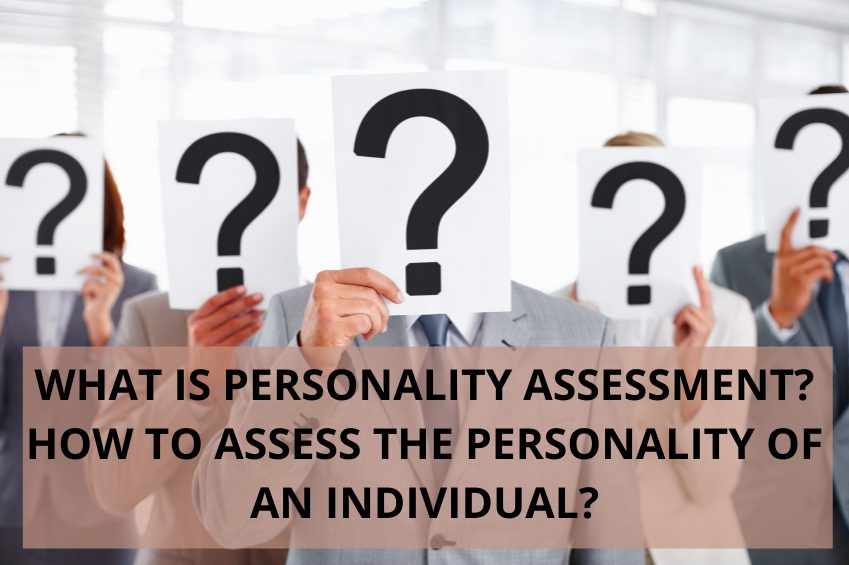WHAT IS PERSONALITY ASSESSMENT? HOW TO ASSESS THE PERSONALITY OF AN INDIVIDUAL?
PERSONAITY ASSESSMENT METHODS
Personality assessment provide a measure of access to emotions and traits such as emotional states, passions, stimuli, attitudes and relationships. Perspectives on personality assessment vary and many aspects of widely used methods and techniques are controversial. This adds reviews such as personality lists, rating scales, behavioral observations, interviews, self reports and projection skills.
Here are some ways to evaluate an individual’s personality:
OBSERVATIONAL METHODS:
These methods are designed to evaluate external signs by observation.
The different observational methods are:
1. RATING SCALES
A rating scale is simply a device that records the degree to which a person is perceived as possessing a defined attribute.
Rating scales can be self-evaluation or other observers’ ratings. Rating scales help to know the degree or magnitude of a particular trait of personality present in a given person. Typically, rating scales are 3, 5, or 7 points. For example, to study the sociability character:
A statement could be something like ‘I prefer to be with people than to be alone’. Answers: (a) always, (b) sometimes, (c) never, (on a 3-point scale); (a) Strongly Agree, (b) Agree, (c) Indifferent, (d) Disagree, (e) Strongly Disagree, (5-point scale) Subject reads the question and ticks one of the answers to indicate the degree of their characteristics.
2. INTERVIEW
This is a very popular observation method. An interview is a face-to-face situation between the interviewer and the interviewer.
Personality is assessed by asking oral questions. Typically, the interview is conducted as part of the assessment program.
That is, supplementing data collected by other means. Typically, an interview is held to evaluate an individual’s personality in order to identify personality traits. There are two types of interviews: organized and disorganized.
3. BEHAVIORAL ASSESSMENT
Several types of behavioral tests are used to personality assessment. Certain challenging situations in this test are artificially created, but are almost identical to the original ones.
The person will face the situation. For example, a nurse may be asked to face an emergency, such as caring for someone with a serious heart attack. A person’s personality will be assessed by how effectively he or she confronts the situation.
Objective observation of an article’s behavior is a skill that falls into the category of behavior assessment. For example, according to teachers, he does not perform well in school, and according to parents, he is difficult to manage at home and does not get along with other children. The following types of evaluation may be considered:
(1) Measures of general intelligence in boys that may help explain the boy’s poor academic performance.
(2) Interviewing him to provide insight into his views on his matter.
(3) Personality assessment that may reveal tendencies associated with inappropriate social relationships.
(4) Observation of his activity and response patterns at school.
(5) Test its behavior in specially designed situations, such as a playroom with lots of interesting toys and games.
(6) An interview with his parents because the boy’s bad behavior at school may be a sign of family problems.
(7) Observe his behavior directly at home.
The value of behavioral evaluation depends on the behavior chosen for observation. For example, if the goal of the assessment is to detect depressive tendencies, then the recorded responses should be responses related to depressive tendencies, such as smiling, motor activity, and speaking intensity.
4. PERSONALITY INVENTORIES
Psychologists have developed many questionnaires, tests, lists to study personality. The list contains a carefully prepared series of questions or statements about the problem being studied.
Each question has two answers, yes or no, and the topic should be marked in the answer that best suits your personality. This method is easy to manage and collects data from many people at once.
Necessary instructions and instructions are available on the face page itself. You should read the topic carefully before answering to avoid confusion.
5. PROJECTIVE TECHNIQUES
Projection is a reward mechanism in which a person reads their thoughts and feelings to another person.
Projection tests/techniques are based on the principle that subjects read or project their own inner conflicts, frustrations, fears, motivations, and other emotions. Naturally, the subject’s reaction reveals the inner workings of his mind. Projection techniques thus provide insight into an individual’s personality.
Because projection tests are not structured in form or context, their purpose is disguised. Therefore, the chances of giving false information are very low.







